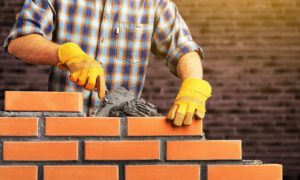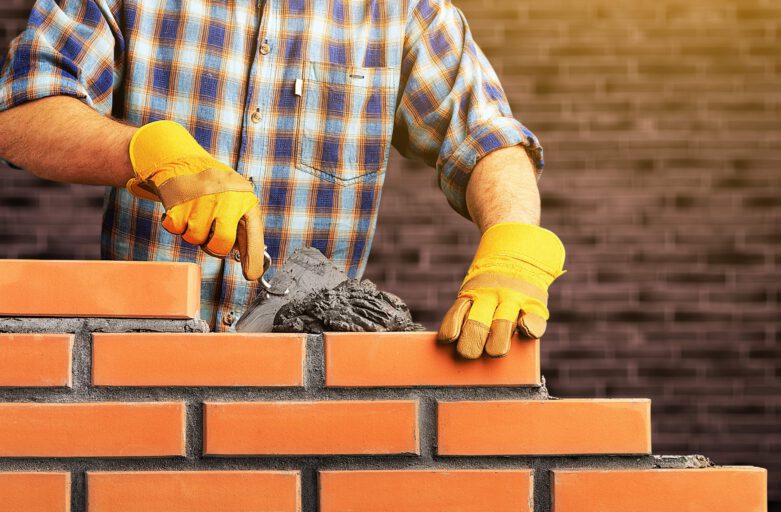Most masonry work is for professionals with the necessary equipment and specialized tools. But there are several small masonry tasks that a handy person can do. For more information, you can visit Retaining Walls Charleston SC to proceed,
Masonry is a noble science, but it needs to be more widely understood and appreciated, especially by those who make its study a constant and regular pursuit. It is not infrequently found that Brethren abandon their interest or membership because they need help understanding what it means.

Since ancient times, when early humans began building structures using stone, Masonry has been a part of human civilization. The earliest structures were simple: stacked stones without mortar to hold them together. Over time, masons refined their techniques to create more complex and durable buildings. Throughout history, available geological formations and conditions have influenced the choice of masonry materials. In Egypt, for example, the builders of the pyramids relied on limestone, sandstone, and alabaster quarried from near the Nile River. People sourced bricks from clay deposits. The Middle Ages saw the development of mortar, which sped up and eased stacked construction. Portland cement, the principal ingredient of modern mortar, has also helped make Masonry more durable.
The ancient Greeks were a great influence on Masonry, with their emphasis on precision and architectural beauty. They introduced new techniques, including corbelling, a process of layering stones until an arched shape is formed. The Parthenon, the temple to the goddess Athena in Greece, is a stunning example of this innovation in Masonry. The Roman Empire also significantly contributed to Masonry with its impressive engineering achievements. The masons of the empire honed their skills to build incredibly large and complex structures, such as aqueducts, bridges, and theaters.
In the 17th and 18th centuries, Freemasonry gained popularity in the Americas as the country developed its first colonies. Many of the most influential Founding Fathers were Masons, including George Washington, Benjamin Franklin, and Paul Revere. Masons also founded their first lodges for men and women during this period. In France in the 1740s, Masonic lodges that admitted men and women began to emerge, although they were sanctioned by and attached to traditional male Masonic lodges.
Today, there are an estimated two million Masons in the United States. Although the fraternity is non-religious, it encourages its members to believe in a supreme being known as the Grand Architect of the Universe in Masonic parlance. This belief is similar to Deism, an ancient concept that emphasizes a god that created the universe but does not have a direct involvement in the lives of its creations.
Masonry uses a variety of building materials to build walls. These materials include brick, stone, and concrete. A particular region’s availability and geological conditions largely determine the choice of these materials. For instance, the ancient temples of Egypt were built using limestone, sandstone, and alabaster quarried from the Nile River. In contrast, the Assyrian and Persian empires inhabited regions with rich clay deposits, allowing them to construct adobe structures with sun-dried brick or glazed masonry units.
Modern Masonry is also often constructed with concrete blocks or adobe bricks. These materials are typically easier to work with than natural rock and stone. Concrete is very strong, and if cured properly, it can withstand great pressure without damage. These materials are also easy to cut and shape into various shapes and sizes, making them ideal for many architectural designs.
Brick masonry is a type of construction that involves using hand or machine-cut bricks that are mortared together to form walls. This method of Masonry has been around for centuries and is still popular in certain areas today. Bricks are available in a wide range of colors and styles, and they can be made to look especially rustic by using old salvage bricks or artificially aging them through various techniques.
All masonry structures must be anchored to a foundation or footing regardless of the material used. This prevents the structure from shifting or moving in response to changes in weather conditions. This can be done by attaching the Masonry to a concrete slab or using steel anchor rods driven into the ground.
The mortar that binds these masonry elements is also known as concrete, consisting of cement powder, sand, and water. The strength of this mixture relies on ensuring that all three ingredients are mixed in the correct proportions, so it is important to use a quality mixer for masonry projects. Mortar made from Portland cement is a common choice for brick, stone, or concrete block projects. It also contains additives that help to increase its strength and reduce cracking caused by temperature changes.
Masonry structures are designed as a series of load-bearing walls, which resist both the structure’s self-weight and occupancy loads (vertical loads). Other structural members support lateral loads, such as cross walls, pilasters, buttresses, or by-the-floor and roof diaphragms. The geometry and arrangement of these load-bearing walls primarily determine the structural integrity of a building. The wall system must also resist the lateral forces that may act on it, including earthquakes and wind.
During construction, the wall sections must be correctly dimensioned to avoid excessive stresses due to non-uniform load distributions. Also, the maximum allowable compressive stress must be limited to the strength of the Masonry. This can be achieved by providing additional support, such as cross walls and buttresses, or by introducing a reinforcement system in the form of rebar or prestressing cables.
The code defines the maximum allowable compressive stress in a masonry wall and can vary between building codes. It depends on the specific masonry type and its production process. For example, the allowable stress for ungrouted CMUs is higher than for grouted units. The permissible stresses in a wall also depend on the design code and the location of concentrated loads. The commentary to the Building Code Requirements for Masonry Structures specifies that the resultant of full loads should fall within the kern of the masonry element, which is defined as the area bounded by lines at one-third of the element’s cross-sectional dimensions or, for foundation piers, within the central area bounded by lines at one-half of the pier’s cross-sectional dimensions.
Load-bearing masonry walls are often the most important load-bearing members of a building in both the vertical and lateral directions. However, this type of construction has several disadvantages, including its heavy and labor-intensive nature. Furthermore, it could perform better in earthquakes. Therefore, masonry buildings are seldom used in seismic zones. However, new developments in masonry construction technology have made these structures more cost-effective and flexible. These include using concrete rebar instead of traditional bricks and introducing prefabricated components such as beams and slabs.
Masonry is the construction of structures from blocks or bricks that are bound together by mortar. Although Masonry can be used in combination with other materials, it’s usually used on its own to create buildings that are very strong and visually appealing. Masonry is also an ideal material for building walls, especially since it’s non-porous and doesn’t provide an attractive food source for bugs or other pests. Masonry buildings are often quite insulated, as well.
Masonry buildings are constructed using various tools, including hammers and mallets, chisels, gouges, and other hand-held and power-driven machine tools. Cranes may be used for large, complicated stonework. The majority of masonry construction, however, is done by hand.
Like concrete, Masonry is very strong in compression but weak in tension. Builders often took advantage of this fact when designing masonry buildings by adding arches above doors and windows, transferring the loads of the walls and floors/roofs above to other members, such as lintels, that act primarily in compression.
The construction of Masonry is often more difficult than concrete construction since it requires much more precision. This is because it relies on the friction between interlocking masonry blocks rather than on a solid connection between each block and the next. Some dry-set masonry, such as ancient unreinforced blocks, even lack any mortar between the blocks themselves!
Most masonry structures rest on footings, typically concrete, but can also be beds of crushed stone. They’re always wider than the wall and help to distribute the weight of the Masonry above over a larger area so that it doesn’t sink into the ground unevenly and crack the building.
Masonry buildings are often modeled using equivalent beam-based approaches, and early models relied on simplified elastoplastic relationships to describe the structural behavior of the masonry building. The problem with this approach is that the masonry spandrels and nodal regions were assumed to be rigid, and shear forces could only occur in piers.
